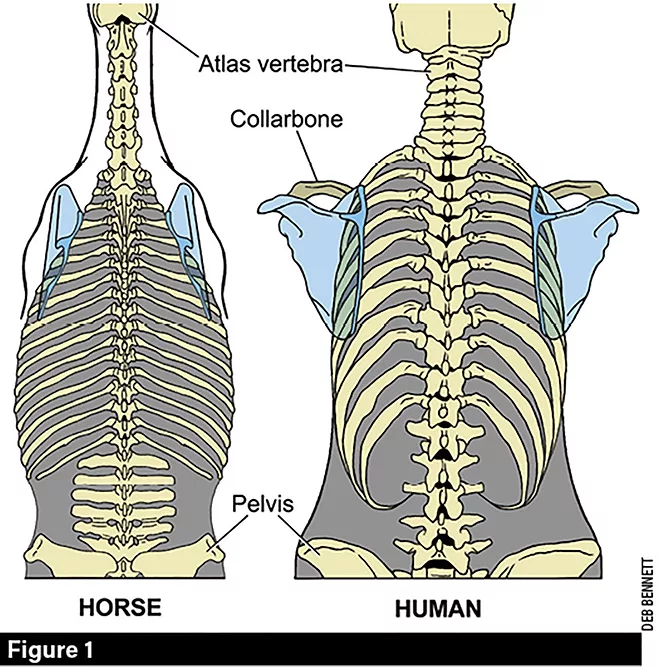American Farriers Journal
American Farriers Journal is the “hands-on” magazine for professional farriers, equine veterinarians and horse care product and service buyers.

Horse and human are seen in dorsal view, with the backbones reduced to the same length from the atlas to the last lumbar vertebra. Human vertebrae and ribs are proportionally thicker and heavier than those of the horse. Scapulas (blue) in both species are flat, bladelike bones that lie up against the ribcage. Horses have no collarbones, which in humans strut the shoulder joint to the sternum.
| Deb bennettThis is the second in a series on straightness and its effects on the hoof.
Read "How Straightness Affects the Equine Hoof" and "How Crooked Carriage Affects Equine Performance"
There are many differences between the skeletons of horses and humans. One that needs to be clear in the minds of all farriers — and all riders and trainers, too — is the fact that humans have collarbones while horses lack them completely. The consequences of this difference impact every aspect of horsemanship, and that certainly includes the form and function of the equine hoof.
Differences in the shape and size of the human spine and ribcage vs. those of the horse are shown in Figure 1 (above). In humans, the shoulder joint is formed by the junction of the scapula, humerus and clavicle. The collarbones, technically called clavicles, strut between the breastbone (sternum) and the shoulder joint. The usual way of considering this anatomy is that the collarbones set the distance between the sternum in the center and the shoulder joints to either side.
The reason that men usually have wider shoulders than women, for example, is that their collarbones are longer. But…